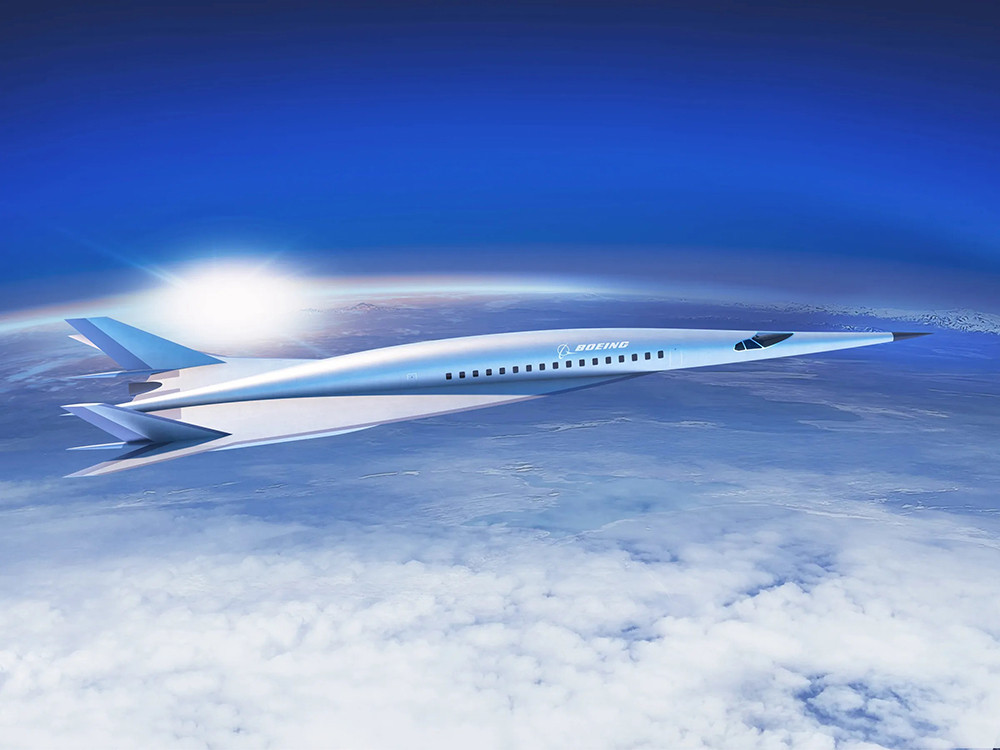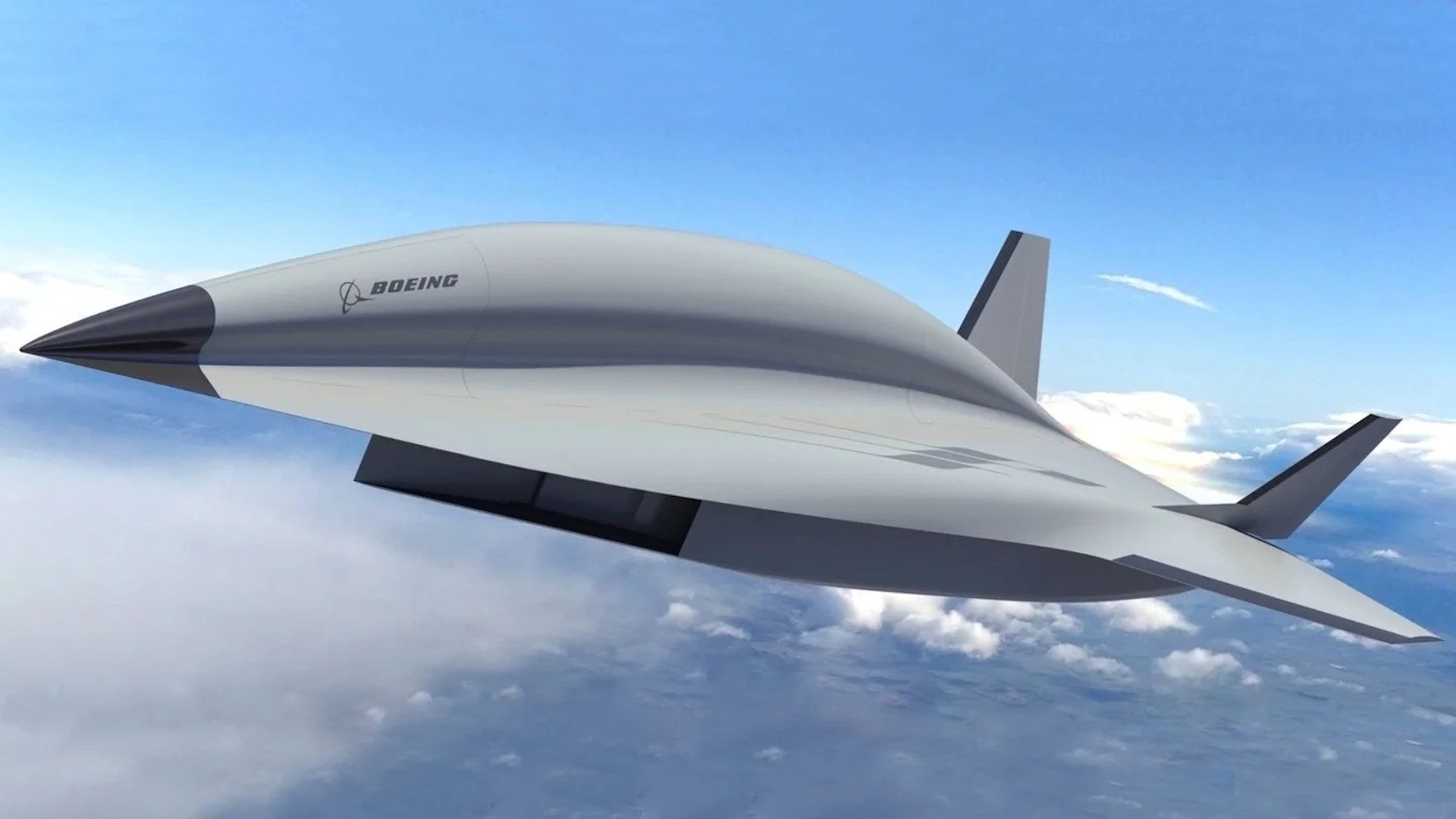Boeing has unveiled a new model of a proposed reusable hypersonic aircraft at a conference this week. The design is an evolution of concepts that were first displayed publicly four years ago and could potentially have military and commercial applications, including as a space launch mothership, according to the company.
Aviation Week Senior Editor Guy Norris spotted the model at the annual AIAA SciTech Forum and Exposition in San Diego, California, which opened on Monday and will wrap up on Friday, and posted pictures of it on Twitter. There is little hard information about it so far, but The War Zone has already reached out to Boeing for details.
On Twitter, Aviation Week‘s Norris said that the design was an evolution of a concept that Boeing had unveiled at the 2018 SciTech Forum. It is “a refined, more realistic Mach 5 reusable air-breathing design targeting military and space launch roles,” he explained. Mach 5 is the accepted threshold for hypersonic speed.
The model Boeing has at its booth at the 2021 SciTech Forum has some very general similarities in its overall planform with the one it displayed in 2018, the latter of which is seen in the video below, but the new design is significantly different in many respects. It has a flatter central fuselage, as well as shorter wings and twin tails. The positioning of two engines underneath the fuselage has been changed, with them now being contained inside two distinct fairings rather than side-by-side.

Aviation Week‘s Defense Editor Steve Trimble also noted that there is a conspicuous gap between the mold line of the forward fuselage and where the wing root starts on either side, despite them looking like they might be supposed to be aligned. It is unclear if this is simply a product of how the model was made or if it actually reflects a true aspect of the design.
It’s not clear what kind of engines Boeing might expect to power this aircraft, but the company has explored various advanced high-speed jet engines in the past, including scramjets and so-called “combined cycle” concepts. A turbine-based combined cycle (TBCC) engine configuration pairs traditional jet turbines with ramjets or scramjets. Ramjets and scramjets simply do not work optimally, or even at all, at lower speeds, so the other turbines would be used for flight in those speed regimes. Viable TBCC engine arrangements are highly complex and are considered by some as a holy grail technology when it comes to designing viable reusable hypersonic aircraft that can take off and land using existing runway infrastructure.

We don’t know what exactly prompted Boeing to debut its updated hypersonic aircraft concept now. The company’s unveiling of its hypersonic concept at the AIAA event in 2018, which was dubbed Valkyrie, was seen as a response from the company to Lockheed Martin’s unusually public pitching at the time of its own proposed advanced hypersonic military aircraft called the SR-72. The SR-72 was billed as a potential spiritual successor to Lockheed’s SR-71 Blackbird supersonic spy plane that could also carry out strike missions.
The appearance of Boeing’s hypersonic aircraft model at the AIAA conference interestingly follows the Air Force’s release of more information about Project Mayhem. Details about this effort are still limited, but it is becoming clear that the core focus is on the development of hypersonic aircraft capable of performing strike and intelligence, surveillance, and reconnaissance (ISR) missions, as you can read more about here.
Of course, Boeing has a long history of interest in such designs for various applications, including as high-speed airliners and as platforms to conduct different kinds of military missions. This is not the first time Boeing has explored the idea of a reusable hypersonic platform for launching payloads into space, as an alternative to traditional space launch rockets, either.

In 2017, the U.S. Defense Advanced Research Projects Agency (DARPA) hired Boeing to develop a reusable hypersonic spaceplane, designated the XS-1, However, that particular program was canceled in 2020. It is all but certain that work on similar concepts is being done in the classified realm, as well. Existing and emerging threats to U.S. government assets in space are continuing to drive a surge in interest in novel ways to rapidly get payloads into orbit to help replace damaged or destroyed satellites in a crisis.

In March 2021, the Australian branch of Boeing’s Research & Technology division announced that it had entered into a partnership with Hypersonix Launch Systems, also based in that country, to work on the development of what was described as a “sustainable hypersonic vehicle.” This aircraft would use Hypersonix’s SPARTAN scramjet engines and be capable of serving as a space launch mothership.
Various other firms, such as aerospace startup Hermeus, have been working on their own hypersonic aircraft concepts in recent years, again with eyes toward both military and commercial aviation sales.
We will certainly be interested to learn more about Boeing’s latest, refined hypersonic aircraft concept and what its specific plans for the design might be.
Update 1/6/2022:
Boeing has provided the following brief statement to The War Zone regarding this new hypersonic aircraft concept:
Boeing has been developing a hypersonic reusable aircraft design concept that could support various Department of Defense military applications. This concept model was shown at the AIAA SciTech Forum in San Diego.
Contact the author: joe@thedrive.com
